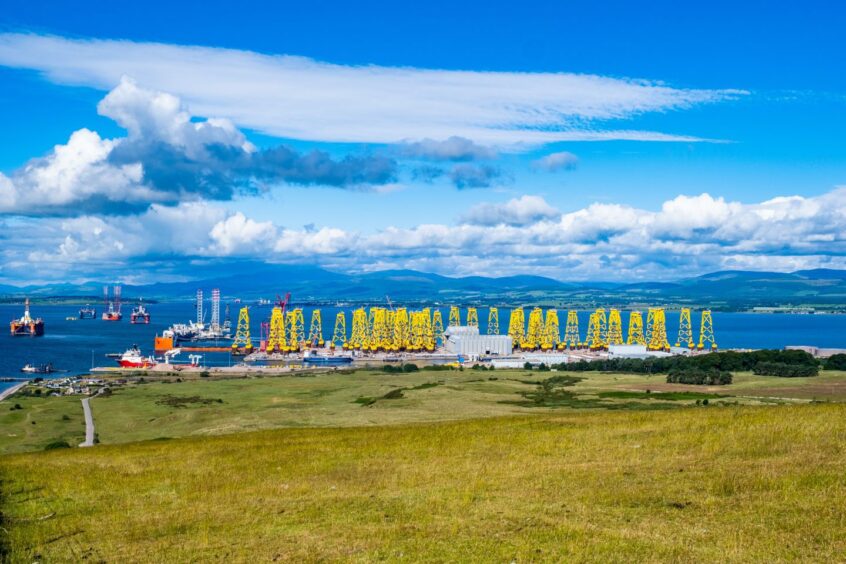
The delivery of Scotland’s largest wind farm has supported a £1 billion boost to the Scottish economy, according to new figures published by developer SSE Renewables and PwC.
The analysis was included in the SSE Renewables’ annual sustainability report, published on Thursday, and compiled using independent analysis by PwC.
The report suggests that the company was responsible for £1.65bn of total value added to UK GDP through financial 2021/22, as a result of investments in a range of flagship wind projects including Seagreen, Viking and Dogger Bank.
The 1-gigawatt (GW) Seagreen project is currently under construction off the Angus coast, and is 51% owned by France’s TotalEnergies and 49% by SSE Renewables.
Turbines at the site produced first power from the project in August.
Overseas manufacturing
Total investment in the Seagreen scheme amounts to some £3bn, but despite local contributions SSE has also faced criticism for sending much of its manufacturing work overseas.
A contract to fabricate the first 30 jackets was awarded to UAE-headquartered firm Lamprell in June 2020, while the remaining 84 will be produced at a Chinese yard.
The decision to send the work overseas drew criticism from unions, with Scottish firm Burntisland Fabrications (BiFab) having also bid for the work.
At the time SSE said the gap between BiFab’s submission and the foreign rivals was “too significant to close”.
However 87% of the wind turbine blades have been produced in the UK on the Isle of Wight, developers said.
4,000 local jobs
Of its £1.65bn total value added, almost £1bn was within Scotland where around 4,000 jobs were supported as a result of SSE Renewables’ activity – part of a wider 10,730 jobs supported across the UK and Ireland as a result of direct and supply chain activities.
The company itself is also expanding, with UK and Ireland employee numbers ballooning by almost 50% in the last two years to over 1,300 people, more than 1,000 of whom are based in Scotland.
Of its workers, around one in three employees have transitioned from high-carbon careers, mostly from outside of the company, it said.
Looking to the wider supply chain, SSE’s report says it has implemented a new sourcing system for all tender events to give greater prominence to sustainability, with a weighting of up to 20% now applied to those criteria.
Registration and pre-qualification questionnaires have also been reviewed to include enhanced sustainability questions, it said.
Looking ahead, SSE said it would make better understanding the drivers of its gender pay gap a priority.
2022 figures show a median gender pay gap across all UK and Irish employees of 9.8% – an improvement on 11.9% last year – while its mean gender pay gap was 11.3%.
The report comes as the energy group looks to invest some £12.5bn over the next five years, as part of a Net Zero Acceleration Programme that will see it double installed renewable energy capacity to 8GW by 2026.
“These findings provide yet more evidence that investing in renewables is not only essential for getting to net zero, but it makes economic sense too. SSE Renewables is investing millions of pounds in the green transition, and our new Sustainability Report shows that we are absolutely committed to investing in a sustainable way that benefits workers and communities, as well as the wider natural environment too through our world-leading digital ecological innovations to commitment to biodiversity net gain,” added head of sustainability Kate Wallace Lockhart.
Recommended for you
